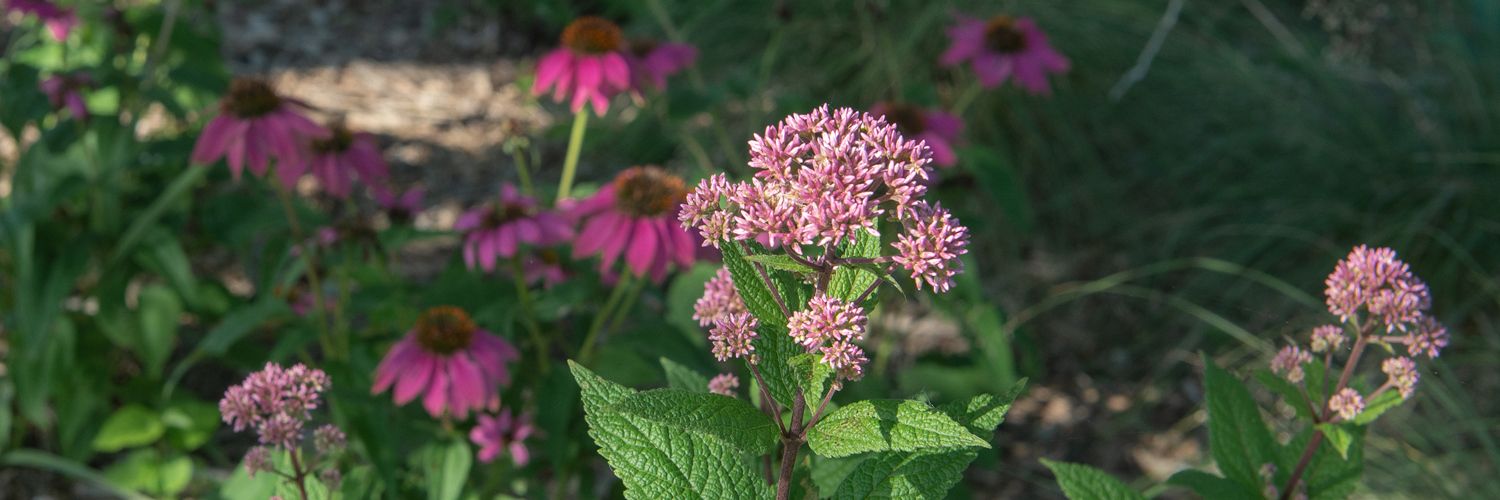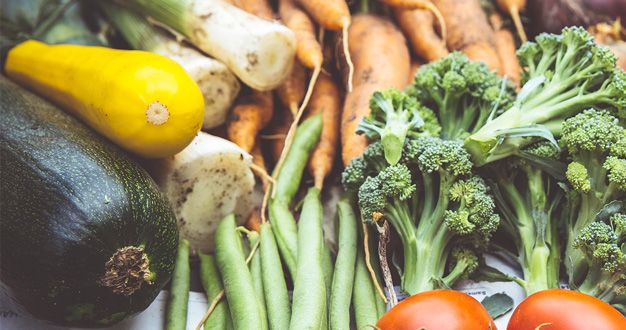
Naturally, your goals for the outdoor spaces around your home might start with your own lifestyle in mind – creating a relaxing space on the patio, growing food in the garden. But before long, you may notice a community of tiny pollinators calling the place home too.
This natural community is vitally important and often goes unseen in an urban setting, especially as many populations face serious decline. But with the right plants, amenities like water and shelter, plus some intentional choices about pesticide use and garden practices, even a small urban garden can make a huge difference in the lives of our local pollinators – and bring them up close where you can even enjoy their fascinating diversity and activity.
Here we share some important components you’ll need to create a garden that truly supports a healthy community of pollinators.
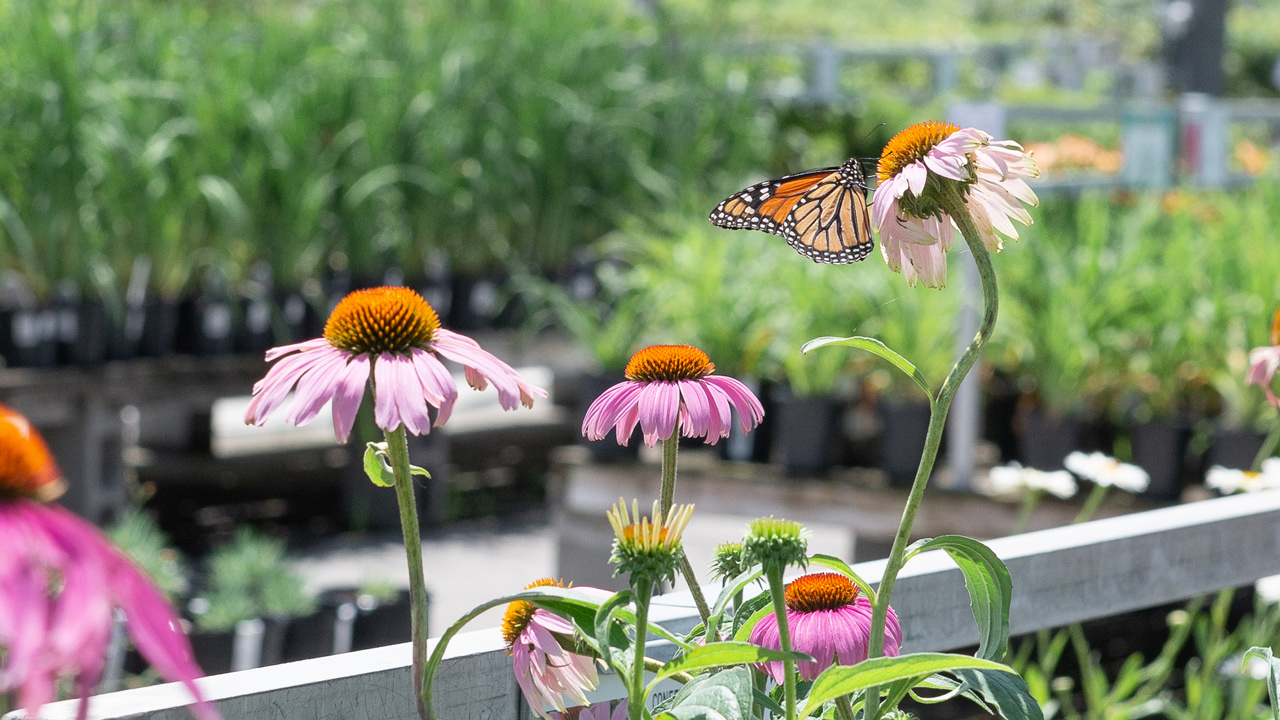
Why We Care
Pollination – moving pollen from one flower to another – is essential for plants to produce seeds. In some species of flowering plants, wind or water transfers the pollen but for most, pollination is an active process carried out by a host of animal species including bees, flies, butterflies, beetles, some birds, and even bats. It’s a critical part of the process for growing most of the nutritious nuts, fruits, and vegetables we rely on for food.
And according to Penn State’s Center for Pollinator Research, about 90% of the plants in our natural habitats require active pollinators as well. These are the plants that provide food and shelter for all living things up and down the food chain.
But while the role of pollinators is such a vital part of our world, researchers have noted an alarming decline in pollinator populations across the globe. This includes not only the famous honeybee but also many native species of pollinating insects, birds, and bats as well. The exact causes vary, but they often include pesticide use, disease, parasites, disruption of migration routes, and large swaths of habitat lost to both man-made development and climate change.
Pollinator decline is a huge, worldwide problem with no easy solution. But as gardeners, we can do our part to support the pollinators in our immediate community – even in the smallest of urban spaces. We can build pollinator-friendly landscapes that provide all the essentials they need to thrive.

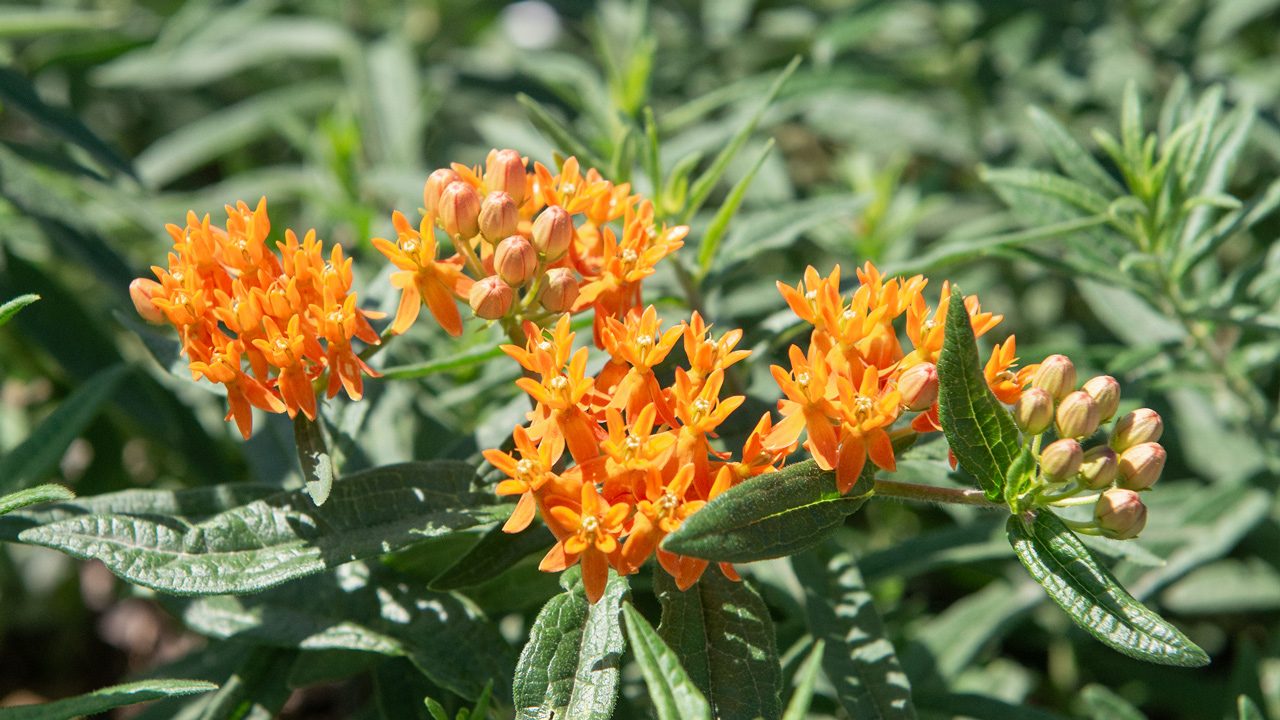
Choose a Diversity of Native Plants
Partnerships between plants and their pollinators have evolved over time with the two becoming adapted to fit one another well. Plant-pollinator relationships are sometimes so specific that a plant may depend on a single type of pollinator in order to produce its seed. For example, tube-shaped blooms are perfectly designed for a hovering pollinator like a hummingbird or butterfly to reach the nectar with their long tongue or proboscis. Other types of flowers, such as coreopsis, yarrow, and coneflower, have shallower blooms that allow pollination by insects with small mouthparts like tiny beneficial wasps.
So, to attract and support a wide variety of pollinators in your garden, it’s important to plant a wide variety of plants – with blooms in different shapes, colors, and bloom times throughout the day and throughout the season. And although many plants provide at least some of the resources pollinators need, native plants are especially important because they provide the most recognizable sources of food and shelter for native pollinators. For the best floral resources, consider starting with some of our favorite native flowers.
Think Beyond the Blooms
Although flowers are usually the first element that comes to mind in a pollinator-friendly garden, pollinators look for other important resources too. A pollinator-friendly water source like a shallow tray filled with water and pebbles provides a safe landing place for small insects and birds to grab a drink. Gently moving water from a small stream or soft bubbler is also a great way to advertise a friendly habitat to passing pollinators.
Shelter is another important resource for many of our native pollinators. Although insects seem to disappear in the winter, many of our native bees stick around – nested out of sight in dense clumps of native grasses or the hollow stems of spent perennials. So try to hold off on cleanup around your landscape until spring – after the overwintering pollinators have emerged from their winter homes.
And don’t forget the larvae. While adult pollinators often feed on nectar and pollen, they also look for the right food sources to support their young too. The most famous example is the exclusive relationship between monarch caterpillars and their host plant, milkweed. But a variety of native and cultivated plants such as oak, elm, cottonwood, clover, parsley, dill, fennel, and several grasses are each important larval hosts for other specific butterflies too.
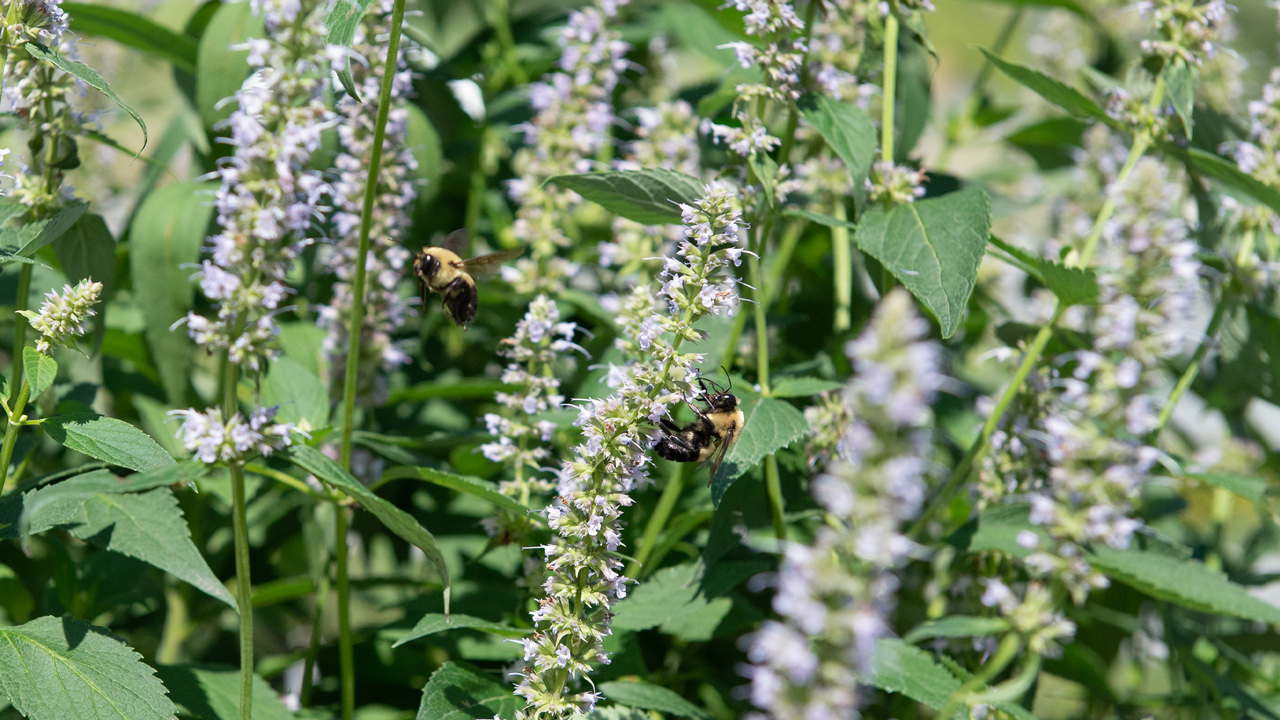
Protect Your Visitors
To maintain a pollinator-friendly habitat, we should avoid the use of pesticides – especially insecticides. Reducing dependence on chemical pesticides starts with choosing pest- and disease-resistant plant varieties – another area where native plants shine. If you spot a damaging pest in your garden, try less aggressive methods to eliminate them first – such as spraying aphids with a strong blast of water or hand-plucking and dunking Japanese beetles in a bucket of soapy water. Careful planting, watering, and pruning practices can keep fungal diseases like powdery mildew from becoming a problem too.
If a chemical solution does become necessary, there are still ways to minimize its impact on pollinators. Always carefully read and follow label directions on any garden chemical to be sure it’s the best product to tackle a specific pest and that you’re applying it in the safest and most effective way. When spraying, try to avoid the blooms, and if you can, wait to spray until later in the evening when many pollinators are less active.
And another valuable side-effect of planting a diverse array of native plants in your pollinator-friendly garden is the appearance of an army of beneficial insects such as hover flies, lady beetles, parasitic wasps, and praying mantids. In addition to helping with pollination, these beneficial insects help control pest populations too.

Find Out More
We spend a lot of time thinking about the importance of pollinators and all the beautiful plants we can partner with to support them. If you have more questions or need suggestions, just stop by and talk with our team. We’d love to share our favorite pollinator-friendly plants and stories of the amazing pollinators we’ve seen enjoying our own gardens too.

